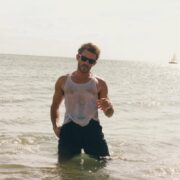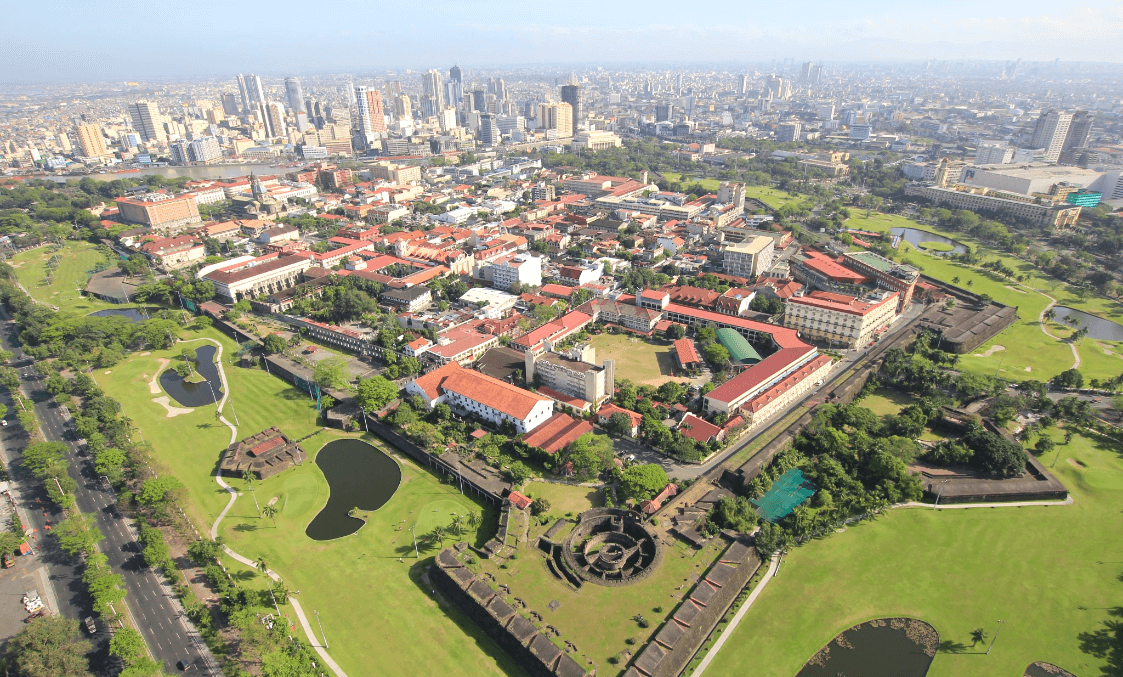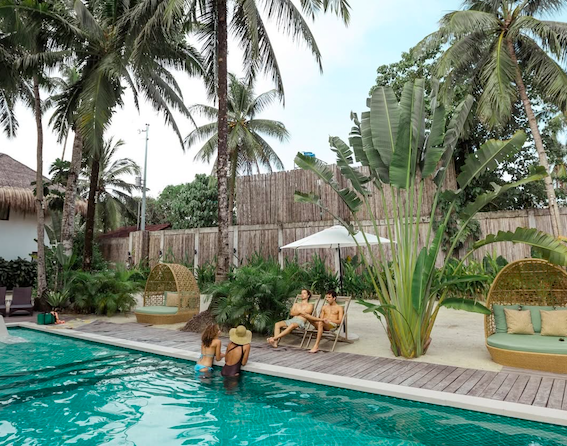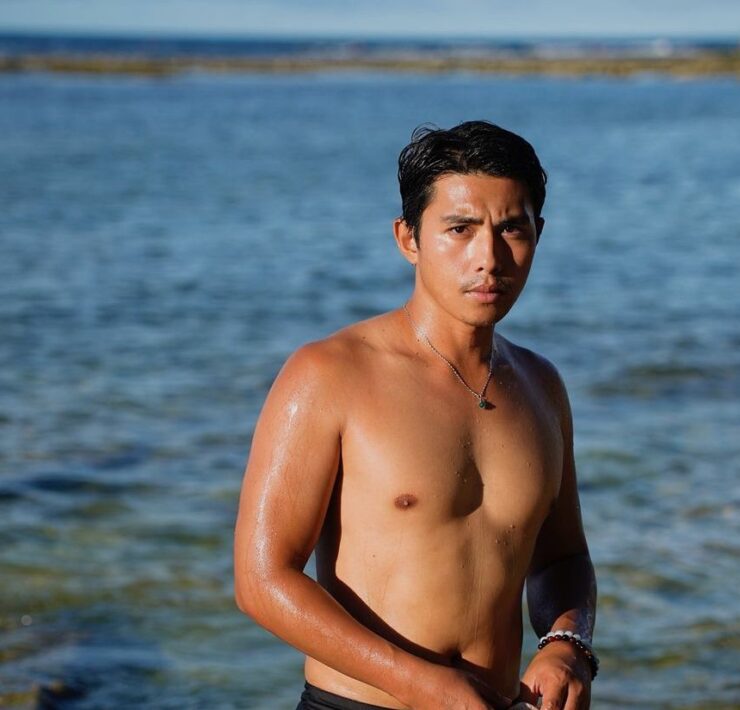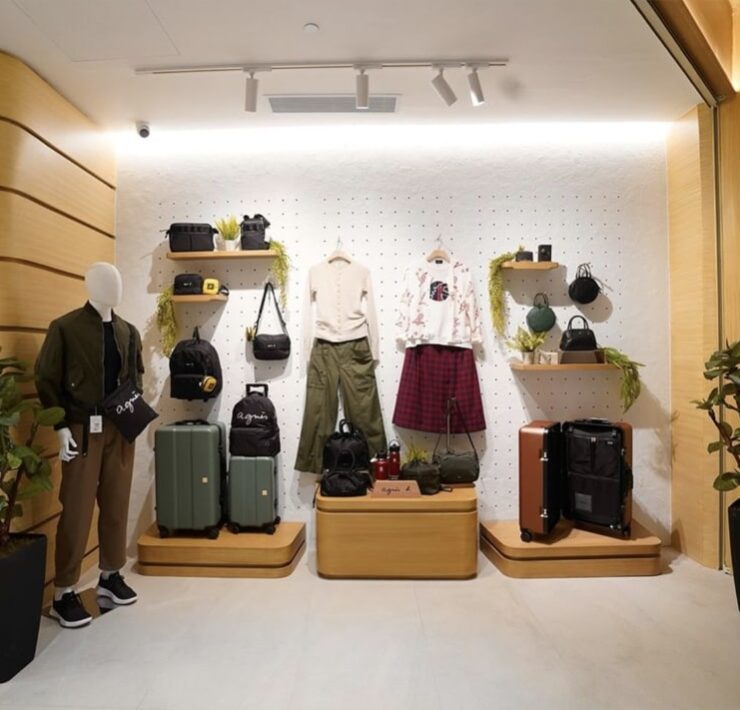Travel diary: Close encounters with Itbayat’s almost harsh beauty
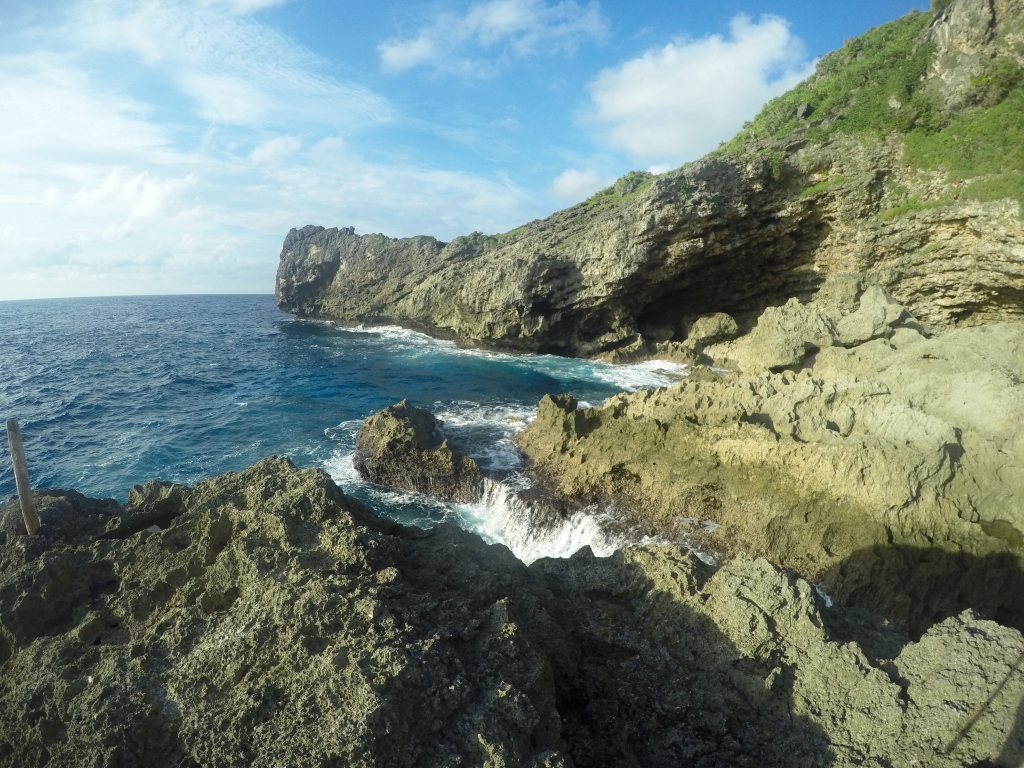
For the first 15 minutes of the boat trip, it was all sunny skies and Instagram photo-stockpiling. I was confident that a Spartan breakfast of coffee and crackers would spare me from the horrors of sea sickness that secondhand stories had warned me about. Batanes had been bright and sweltering the past couple of days, and I took the delightful weather as a good omen for crossing a wide swath of the notoriously choppy West Philippine Sea, from the Basco Port to Itbayat. Besides, the falowa (motorized ferry) I had boarded, the M/B Veronica, had no seating; I could lie down in case I felt queasy. “It’s all good,” I thought to myself.
Closer to Taiwan than to the rest of Luzon, Itbayat is the country’s northernmost town. Four more, much smaller islands—Siayan, Ditarem, Misanga, and Mavudis—are situated further up north, but they’re uninhabited. In terms of civilization, Itbayat is the Philippines’ last frontier.

“On clear nights, we can see Taiwan’s city lights from where we’re standing. It’s not true, though, that we can hear their roosters crowing,” local tour guide Bong De Guzman told me much later that day as he gestured towards the general direction of Taiwan. We were then at the recently constructed viewing deck on Mt. Karoboboan, the island’s highest point that rises 280 meters above sea level. From where we stood, the whole of Itbayat also looked as if it were uninhabited, all undulating terrain covered in various shades of green. Though the sunset was muted by low-lying clouds, there was enough light to see that no sign of electricity from any of the town’s five barangays could penetrate the generous cover of forests.
But flash back to the boat: as with most ignorant assumptions, I was way off the mark. Here’s the most important tip I could give to anyone thinking of going to Itbayat by falowa: take your anti-nausea medication beforehand.
Nearly an hour into the trip, I was curled up on the bottom of the boat, trying not to roll against other passengers every time the falowa lurched vigorously. I had been feeling queasy for a while, especially with the mid-morning heat, but believed it wasn’t anything a piece of candy couldn’t fix. Barely a minute after I’d popped a mint candy into my mouth, I instinctively scrabbled my way to the boat side to hurl, and out it all came: the candy, the coffee, the pulpy mash of cracker, immediately swallowed by the white-crested waves.
A nearby passenger grabbed the back of my shirt, afraid that in my preoccupation with emptying my stomach, I’d pitch forward into the water with the boat’s next drunken lurch. As soon as I slumped down to the floor, defeated by vomiting, someone handed me a plastic bag (and would continue to do so four more times for the rest of the trip) while another passenger offered to rub White Flower oil on my temples. I gratefully accepted every offer. “It happens even to long-time mariners,” the man reassured me as he massaged oil on my face. Overwhelmed, I could offer only a faint, close-eyed “Thank you” to the Itbayatens’ kindness. Later on, as other passengers were getting off the boat, I made one last painful retch. Through the misery, I registered how pretty the lemon-yellow of my upchucked bile looked against the ridiculously blue water, and how comforting it was to have someone rubbing my back. It turned out to be one of Veronica’s crew members who took pity on me even as his other hand was busy helping another passenger walk her way to the front of the boat.

There are YouTube videos of passengers setting foot on Itbayat by making a leap from the boat to a slick quay, with some getting soaked from incoming waves. At the Chinapoliran Port, a long and steep set of concrete stairs further welcomes them and their wobbly sea legs to the island, as crew members and porters briskly haul in luggage, supplies, sometimes even motorbikes and bicycles from the falowas, then loading them with Basco-bound passengers and their bags.
There’s a system to the flurry of activities, and while everyone is amiable with each other—probably happy to be on dry land again—the crew members and Coast Guards sharply observe the maintenance of safety and order.
Chinapoliran is less than a minute’s ride away from the nearest barangay, Mayan. Here, the town square lawn is where kids play sports (softball for girls, basketball for guys) and the public school holds its intramurals. Facing the square are the Santa Maria de Mayan Church, whose construction began in 1845 and was finished 40 years later, and the town hall, where all visitors must drop by first to pay the tourist fee before proceeding anywhere else in the island.

Hailed as one of the world’s largest uplifted coral formations, Itbayat has no beaches. Instead, its boundaries are steep cliffs, gorges, and quays carved out of corals, and only the most sea-seasoned locals would dare fish and spear-dive in its waters. Roads both paved and unpaved would frequently rise and dip, with tricycle drivers alternating between revving up their motors and downshifting to first gear, and the various ports around the island are marked by sharp inclines where fisher folks’ colorful boats are tethered well above the shore. Natural and man-made stonehenges can be spotted in certain stretches of grassland, with the man-made ones serving as property boundaries. The Karoboboan and Riposed mountains, meanwhile, are volcanic outcrops considered to have been the foundation of the whole of Itbayat.
Isolated even from Basco’s relative modernity, there’s a kind of cruel beauty to the island—cruel because it doesn’t allow you to get too close and too comfortable. One would think that after the ordeal of getting there, a visitor is entitled to enjoy what they came for, but depending on the fickle weather, some of Itbayat’s natural attractions might be closed to unlucky tourists.
“The rocks at Torongan Cave are still too slippery to walk on because of the heavy rains last weekend so we won’t be going there,” Bong told me before we started the tour. The cave is the site believed to be the first landing place of Austronesians from Formosa in 4000 BC, the most ancient dwelling place in the whole of Batanes. It was a pity I didn’t get to see it, because based on travel blog photos, the cave provides a perspective of the sea different from the view atop the island’s cliffs—not that those cliffs present anything less than spectacular.
At Mauyen Cliff, every effort to capture the immense beauty of the vista in a photograph is futile: the varying shades of blue and green, maybe, but not the sun’s warmth, not the whipping wind, and not the cliff’s vertigo-inducing steep drop.

On bright, sunny days, the colors on the island seem extra vibrant: the sea is startlingly blue against the verdant landscape, and the clay loam is an intense reddish brown that creeps into a shoe sole’s every groove. All three intense colors can be seen together at Kavaywan Lake, except that the blue is a calm reflection of the sky. Cows and carabaos graze on the pastures surrounding the placid lake, and an occasional local would go fishing in it. Kavaywan is quite big, though not suitable for swimming, and Bong informed me that pilots flying in to Itbayat use it as a landmark to signal the start of their descent.

A good length of the island’s national road is paved and bracketed by medium-height walls made out of bleached coral, and it leads to Itbayat’s six ports. At Paganaman Port, where fishing vessels dock, the sharply curving slope threatens a lower body workout to those curious to see where it leads to, but the small lagoon waiting at the bottom is worth the effort. The pounding waves create a whirlpool—the lagoon—that gushes into an underground passage before getting flushed back to the sea on the other side of the port. To get closer and feel the power of the water’s rush, one has to clamber down the sharply pockmarked and cratered rock shelf that, personally, reminded me of what I imagine the moon’s surface to be.

A similarly unusual topography can be seen on Rapang Cliff, a natural park of forests, cliffs, and rocky hills, with a pasture where cows and goats graze and bonsai ariuz trees grow. Its most popular feature, though, is a rock garden of hardened and bleached corals that’s almost alien in its beauty. The cliff is one of the most photographed attractions on Itbayat, but like the island itself, it requires a bit of effort to be seen. A tricycle can only take a tourist (and their guide) so far, and the rest of the way is a two-and-a-half-hour hike of moderate difficulty. Hikes start at 3 a.m. for tourists to make it to the cliff by sunrise, then return to Mayan for a quick breakfast before catching the 9 a.m. falowa back to Basco—again, a casual overnighter can’t get too close or too comfortable.

The Itbayatens, though, are so much more hospitable than their island’s terrain. The day I visited, it was the feast day of the Virgin Mary, and Bong said we could get free lunch from the barangay’s communal meal. A group of women held court over the crowd and plastic tubs full of warm food. One tub contained turmeric rice wrapped in glossy kamansi leaves and another contained viand—uvud balls (the heart of the banana tree mixed with ground pork), slices of beef, and fried fish—also wrapped in kamansi. The women were handing out food to everyone gathered around them, each one making sure that every single person who dropped by got their share. Bong explained, “That’s how we celebrate fiestas here. People contribute how much they can—it doesn’t matter if it’s a hundred or ten pesos—then everyone gets to eat.”

That brought home to me how priorities this far up north is so different and much more desirable than the ones that preoccupy me back in the city. Harsh elements may have kept certain modern comforts and conveniences from coming in to the island, but it’s hard to experience FOMO when you’re dealing with what’s right in front of you, with the knowledge that your comfort and success is dependent on the support given by those around you. Itbayat may be a lovely, remote island, but definitely, no one here acts like one. – September Grace Mahino
HOW TO GET THERE (WEATHER PERMITTING)
By water: Three falowas leave the Basco Port every morning (around 7 a.m.) when there’s good weather. Fare costs P450 pax, and the trip is two hours long.
By air: Book a 12-minute flight to Itbayat from the Basco Airport with Northsky Air.
WHERE TO STAY
There are a few homestays operating on the island. The Levinda Lodge in Mayan is located right in front of the Sta. Maria de Mayan Church and the town square. Fan rooms are available for P200 pax, with both single and double occupancy rooms, as well as an aircon room for P400 pax. Folding beds are available for those who’d like to sleep under the stars on the rooftop or in the balcony in case the heat gets too much during midnight blackout, which lasts until 6 a.m. every day. Tess de Guzman, the woman running the lodge, is also a TESDA-accredited masseuse who charges P500 for a whole body massage. Levinda Lodge. Magsaysay St., Mayan, Itbayat, Batanes. 0939-917-395, 0999-983-2321.
WHERE TO EAT
There are no commercial dining establishments on the island, though meals can be prepared by the homestays for P200 pax a meal. The Itbayat Caterer’s Cooperative can also deliver meals for the same price. Around town, there’s a Larez Carinderia near the town center as well as sari-sari stores that sell canned food, instant noodles, and snacks. Prices of food and other commodities on the island are a bit costly, but that’s because most supplies are shipped in from Basco.
HOW TO GET AROUND
Tour guides such as Bong De Guzman can be hired for a rate of P1000 a day, for as much as 10 people in the tour group. The guides will also be the ones to hire tricycles and tricycle drivers for the tour for a fee of P2000 per tricycle, which can accommodate up to three passengers. Bong De Guzman, Jr. 0920-217-5192.
WHAT TO BRING
Have a stash of anti-nausea medication for the boat trip. There are no banks on the island so bring enough cash to cover all your expenses. If you like bread, bring your own stash as the snacks available on the island are of the packaged kind: cookies, chips, candies. Wear comfortable rubber-soled shoes for the tour, as there will be plenty of hiking to get to picturesque spots.
WHEN TO VISIT
Summer (from April to June) usually means clear weather and calmer waters. The temperature can get chilly from November to March.
Photographers: September Grace Mahino and Jemaica Pensigan (Paganaman Port/header image and Rapang Cliff).
This story originally appeared in Garage Magazine’s November 2016 issue.
Save
Save
Save
Save






